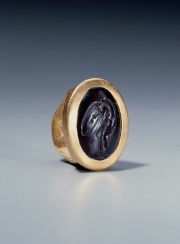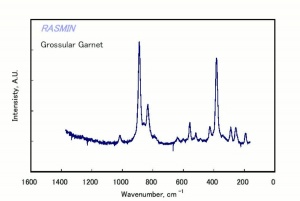Difference between revisions of "Fluorescent minerals"
| Line 3: | Line 3: | ||
Minerals that have the unique physical property to absorb light and one wavelength and instantaneously release it at a different wavelength, resulting in a temporary color change to the eye of the human observer. Only about 15% of minerals are able to fluoresce. The fluorescence is usually due to a cation activator, such as: tungsten, molybdenum, lead, boron, titanium, manganese, uranium, and chromium, but some rare earth elements are also able to contribute to the phenomenon. Most minerals fluoresce a single color, but some may have multiple colors; for example calcite can fluoresce red, blue, white, pink, green and orange. | Minerals that have the unique physical property to absorb light and one wavelength and instantaneously release it at a different wavelength, resulting in a temporary color change to the eye of the human observer. Only about 15% of minerals are able to fluoresce. The fluorescence is usually due to a cation activator, such as: tungsten, molybdenum, lead, boron, titanium, manganese, uranium, and chromium, but some rare earth elements are also able to contribute to the phenomenon. Most minerals fluoresce a single color, but some may have multiple colors; for example calcite can fluoresce red, blue, white, pink, green and orange. | ||
| − | |||
| − | |||
| − | |||
| − | |||
== Other Properties == | == Other Properties == | ||
Revision as of 12:42, 1 May 2018
Description
Minerals that have the unique physical property to absorb light and one wavelength and instantaneously release it at a different wavelength, resulting in a temporary color change to the eye of the human observer. Only about 15% of minerals are able to fluoresce. The fluorescence is usually due to a cation activator, such as: tungsten, molybdenum, lead, boron, titanium, manganese, uranium, and chromium, but some rare earth elements are also able to contribute to the phenomenon. Most minerals fluoresce a single color, but some may have multiple colors; for example calcite can fluoresce red, blue, white, pink, green and orange.
Other Properties
Isometric crystal system with dodecahedron and trapezohedron habits.
Luster = vitreous to resinous. Fracture = conchoidal or uneven. Streak = colorless to white
Fluorescence = none (except green ones which may give weak yellow-orange colors)
| Mineral | Composition | Visible color | Fluorescent color |
|---|---|---|---|
| Agate | PbCO3 | colorless to white | yellowish |
| Apatite | PbCO3 | colorless to white | yellowish |
| Barite | PbCO3 | colorless to white | yellowish |
| Calcite | PbCO3 | colorless to white | yellowish |
| Cerrusite | PbCO3 | colorless to white | yellowish |
| Chalcedony | PbCO3 | colorless to white | yellowish |
| Corundum | PbCO3 | colorless to white | yellowish |
| Dolomite | PbCO3 | colorless to white | yellowish |
| Fluorite | PbCO3 | colorless to white | yellowish |
| Quartz | SiO23 | colorless to white | red |
| Rhyolite | PbCO3 | colorless to white | yellowish |
| Scapolite | PbCO3 | colorless to white | yellowish |
| Willemite | PbCO3 | colorless to white | green |
Additional Information
J. Ogden, Jewelry of the Ancient World, Rizzoli International Publications, New York, 1982.
Comparisons
Properties of Common Abrasives
Properties of Common Gemstones
Natural and Simulated Diamonds

